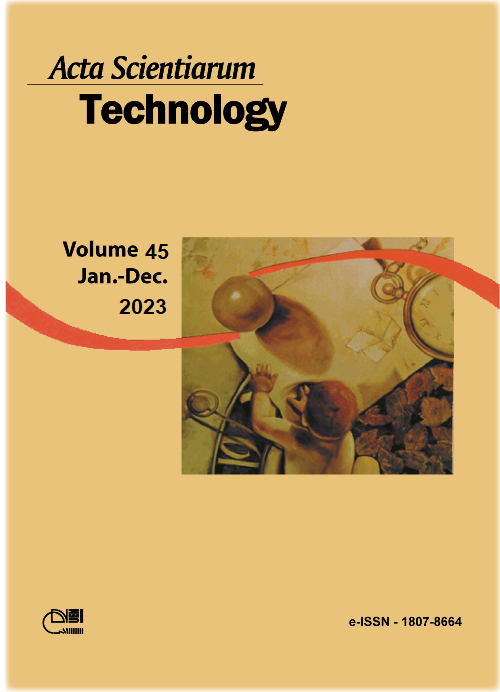Physical-chemical characteristics and modeling of the dehydration curve for Viola x wittrockiana mass loss
DOI:
https://doi.org/10.4025/actascitechnol.v45i1.59783Palavras-chave:
pansy; edible flower; antioxidant activity; phytochemicals; nonlinear regression.Resumo
The edible flowers have in their constitution proteins, lipids, starch, vitamins, important minerals for a healthy diet, as well as bioactive compounds recognized for their potential effects on human health. Due to the high perishability of the flowers, their marketing represents a challenge, and drying is a method that contributes to the preservation of the product. Given the above, the present study aims verify which is the curve that best adjusts to the mass loss during the dehydration process through the proposition of Boltzmann nonlinear regression model in face of classical dehydration curve models, as well measure in frozen flowers centesimal composition of Viola í— wittrockiana flowers. The flowers were dehydrated at 30°C in an air circulation oven up to constant weight. The centesimal composition of the dehydrated Viola í— wittrockiana is 84.69% humidity, 8.76% carbohydrates, 2.51% proteins, 2.41% crude fiber, 1.23% ash, 0.40% lipids and 48.68 Kcal. With respect to phenolic compounds, the frozen and dehydrated flowers showed 423 and 301 mg gallic acid equivalents per gram and, about antioxidant activity, showed 90.67 to 94.93% inhibition of the DPPH radical (2,2-Diphenyl-1-picrylhydrazyl) and 44.00 and 49.00 mg of Trolox.100 g-1. The Boltzmann model showed best fit the mass loss of Viola í— wittrockiana and through this model the maximum mass loss occurs with 0.16 g, the maximum rate of mass loss of Viola í— wittrockiana occurs in 46.7 min, whose mass loss is 0.66 g. The dehydration proved to be an efficient method to preserve the flowers because the bioactive compounds did not present significant losses after the application of this process.
Downloads
Referências
Downloads
Publicado
Como Citar
Edição
Seção
Licença
DECLARAÇíO DE ORIGINALIDADE E DIREITOS AUTORAIS
Declaro que o presente artigo é original, não tendo sido submetido í publicação em qualquer outro periódico nacional ou internacional, quer seja em parte ou em sua totalidade.
Os direitos autorais pertencem exclusivamente aos autores. Os direitos de licenciamento utilizados pelo periódico é a licença Creative Commons Attribution 4.0 (CC BY 4.0): são permitidos o compartilhamento (cópia e distribuição do material em qualqer meio ou formato) e adaptação (remix, transformação e criação de material a partir do conteúdo assim licenciado para quaisquer fins, inclusive comerciais.
Recomenda-se a leitura desse link para maiores informações sobre o tema: fornecimento de créditos e referências de forma correta, entre outros detalhes cruciais para uso adequado do material licenciado.



















